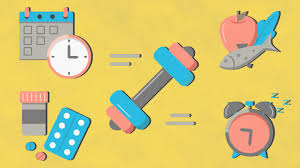Millions of people worldwide suffer from headaches. While most headaches are temporary and manageable, chronic or severe headaches can significantly impact your daily life. Whether you experience occasional tension headaches or suffer from recurring migraines, preventing headaches before they escalate can be a game-changer. One of the most effective ways to manage and prevent headaches is through early diagnosis and treatment. By identifying the underlying causes of your headaches early, you can reduce the frequency and severity of episodes, ultimately improving your quality of life.
The Types Of Headaches
Headaches are primary or secondary. Primary headaches develop independently. Migraines, tension headaches, and cluster headaches are typical primary headaches. Secondary headaches, on the other hand, are a symptom of another underlying issue, such as a sinus infection, head injury, or even a neurological disorder.
Nausea, light sensitivity, and aura are common symptoms of migraines, one of the most excruciating headaches. Stress, muscle strain, and bad posture generate tension headaches, the most frequent type. Cluster headaches, though less common, are intensely painful and often occur in cycles.
Secondary headaches may be caused by a brain tumor, stroke, or infection. For this reason, it’s important to address any headache that seems unusually intense, persistent, or accompanied by other concerning symptoms. To learn more about early diagnosis and professional treatment options for chronic headaches, visit https://www.southvalleyneurology.com/services/headache.
The Importance Of Early Diagnosis
Early diagnosis can prevent headache progression. While many people attempt to manage their headaches with over-the-counter medications or lifestyle adjustments, these treatments may not address the underlying causes. By visiting a healthcare professional, particularly a neurologist, you can determine the root cause of your headaches and implement a targeted treatment plan.
See a neurologist for regular or severe headaches. Neurologists can do a full evaluation, including a physical exam, medical history review, and MRI or CT scans if needed. These tests help identify conditions that could be contributing to your headaches, such as abnormalities in the brain, vascular issues, or structural problems.
Undiagnosed dangerous illnesses can be prevented by early action. For example, a persistent headache that worsens over time could signal a more significant issue, such as a brain tumor or aneurysm. Detecting such conditions early allows for timely treatment, which can often prevent further complications and improve the chances of recovery.
Proactive Treatment And Prevention Strategies
Once the cause of your headaches is identified, a neurologist will work with you to create a personalized treatment plan aimed at reducing or preventing headaches. There are several strategies that may be employed, depending on the type and severity of your headaches.
For primary headaches, lifestyle modifications are often key to prevention. Stress management methods including yoga, meditation, and CBT may be used. Learning how to manage stress and avoid triggers—such as lack of sleep, dehydration, or certain foods—can help significantly reduce the frequency of headaches.
In some cases, medications may be prescribed to prevent headaches. Migraine preventive drugs lessen attack frequency and intensity. Other medications, such as pain relievers or anti-nausea medications, may be prescribed for managing symptoms during an attack.
For those suffering from tension headaches, physical therapy or relaxation techniques can help alleviate muscle tension and reduce headache frequency. Posture correction, regular exercise, and ergonomic adjustments in the workplace may also play a role in preventing headaches caused by muscle strain.
In cases of secondary headaches, treating the underlying condition is crucial. For example, if your headaches are due to a sinus infection, antibiotics or nasal decongestants may be prescribed to clear up the infection and relieve headache symptoms. If a more serious condition is diagnosed, such as a brain injury or vascular disorder, appropriate treatments such as surgery, medication, or lifestyle changes will be recommended.
The Role Of Regular Monitoring
After starting treatment, regular doctor visits are essential for progress monitoring. Keeping a headache diary, where you track the frequency, intensity, and triggers of your headaches, can help both you and your doctor assess whether your treatment plan is effective.
By tracking your headaches, you can also gain valuable insights into what may be causing them. This can help you avoid triggers and take preventive measures before a headache strikes. Early diagnosis also allows for treatment plan modifications, giving the best care. If you’re struggling with frequent or severe headaches, seeking the expertise of South Valley Neurology can help you get the right diagnosis and treatment plan tailored to your needs.
Conclusion
Headache prevention is not just about managing the pain when it occurs—it’s about understanding the causes and addressing them early. Through early diagnosis, you can pinpoint the underlying issues contributing to your headaches and take steps to prevent future episodes. Early intervention is essential for long-term alleviation, whether through lifestyle modifications, medicine, or more serious conditions. Don’t let frequent or severe headaches take over your life. Seek professional help, and take control of your headache management today.


